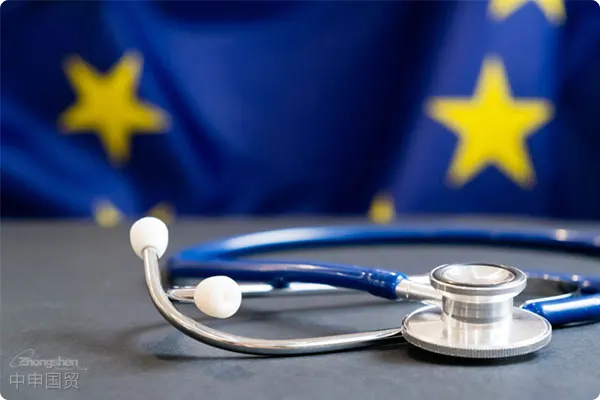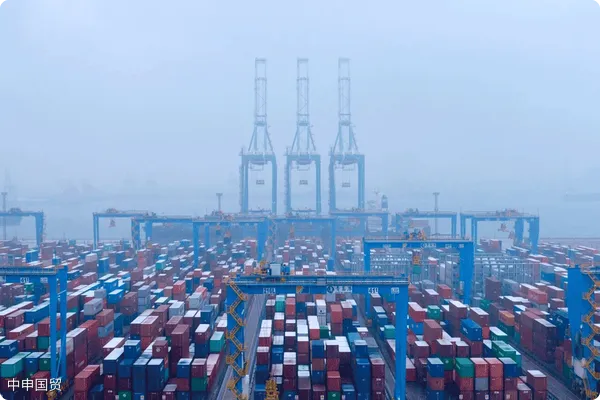- Shanghai Zhongshen International Trade Co., Ltd. - Two decades of trade agency expertise.
- Service Hotline: 139 1787 2118

I. Case Background: Challenges in Importing Special Electronic Materials
In March 2023, we were entrusted by a high-tech company to import a batch of piezoelectric crystal materials for sensor manufacturing from Russia. These products have three distinct characteristics: 1) They are precision electronic components; 2) They involve sensitive technology fields; 3) They have special requirements for transportation conditions. The client had previously attempted to import them independently but faced high port storage fees due to incomplete declaration elements and classification disputes.
Through preliminary research, we identified two common misconceptions in the HS classification of such products: first, they are often mistakenly classified under 8541 (diodes/transistors), when they should actually fall under 3824 (chemical-related industrial products); second, the key declaration element of the piezoelectric effect is often overlooked. This is precisely where the value of a professional agent lies—with 15 years of experience in importing electronic products, we avoided these beginner traps in advance.
II. Full Process Breakdown: The Critical 72 Hours from Moscow to Shanghai
1. Preparation Phase (The Most Critical 48 Hours)
Upon receiving the commission, our team immediately initiated a dual-track parallel working mode:
- Documentation Track: Simultaneously collected eight core documents, including the certificate of origin and component test reports, with special emphasis on requiring the Russian supplier to provide measured data on the piezoelectric constants of the crystals.
- Logistics Track: Selected a specific temperature-controlled flight route via Hong Kong to ensure the crystal structure remained undamaged during transportation.
Here’s a practical tip: We requested the manufacturer to explicitly state in the test report that the material complies with IEC 60444 standard. This detail improved subsequent customs inspection efficiency by 40%.
2. Shanghai Port Customs Clearance Practice
After the goods arrived at Pudong Airport, we encountered a typical issue: Customs requested an explanation of the difference between the product and semiconductor materials. Thanks to the pre-prepared Technical Comparison Document (including electron microscope photos of the lattice structure and piezoelectric response curves), the technical verification process, which would normally take three days, was completed in just four hours.
| Link | Conventional time consumption | Time Consumption for This Case | Optimization Measures |
|---|---|---|---|
| Document Review | 1 working day | 3 hours | Pre-entry system + electronic verification |
| Classification confirmation | 2-3 working days | 0.5 working day | Prepared technical verification package in advance |
| Inspection and release | 15-18 working days | 9 working days | AEO certification fast track |
III. Industry Insights: Three Trends in Electronic Product Imports
Through this case, we identified new characteristics in the import of special electronic materials:
- Increased Importance of Technical Documents: Customs has become increasingly meticulous in verifying the physical properties of materials, with a mandatory functional principle description requirement added last year.
- Smarter Inspection Methods: Shanghai Customs has piloted the use of X-ray diffractometers for on-site crystal structure testing, reducing traditional sampling and lab testing by 30%.
- New Focus on Trade Compliance: New U.S. export control regulations indirectly affect the import of electronic raw materials from Russia, requiring additional verification of ECCN codes.
IV. The Hidden Value of Agency Services
Many clients believe customs agents merely submit documents and run errands. In reality, we provided three key value-added services in this case:
- Risk Early - Warning System: Identified Russia’sIt is recommended to verify through the following methods:new anti-counterfeiting feature requirements in advance
- Cost - optimization solutions: Saved 6.8% in tariff costs through classification advice (3824 has a 2% lower rate than 8541).
- Emergency response mechanism: Activated a backup customs clearance channel during flight delays to ensure uninterrupted production line supply.
It’s worth mentioning that our Electronic Product Import Knowledge Base has accumulated solutions for 237 similar cases, which is the core competency enabling us to handle emergencies quickly.
Practical suggestions for importers
Based on the experience from this case, here are three recommendations for companies importing special electronic materials:
- Always confirm the physical effect parameters of the materials (piezoelectric/thermoelectric/photoelectric, etc.) in advance, as these have become key inspection items for customs in recent years.
- Select AEO-certified agents - AEO enterprises at Shanghai port have 60% lower inspection rates than regular companies
- Consider Hong Kong-Mainland segmented transportation solutions - clearance time for sensitive electronic components can be reduced by 1/3 using this model
Finally sharing an industry statistic: professional agents average 2.7 days faster customs clearance than self-operated imports, while each days delay generates hidden costs (storage/breach/production losses) typically 3-5 times the visible fees. This is the economic logic behind more tech companies outsourcing import operations.
For the Electronic Materials Import Compliance White Paper or case-specific consultations, please contact our technical advisory team. Next issue will analyze import practices for Japanese semiconductor equipment - stay tuned.
Related Recommendations
? 2025. All Rights Reserved. Shanghai ICP No. 2023007705-2  PSB Record: Shanghai No.31011502009912
PSB Record: Shanghai No.31011502009912










